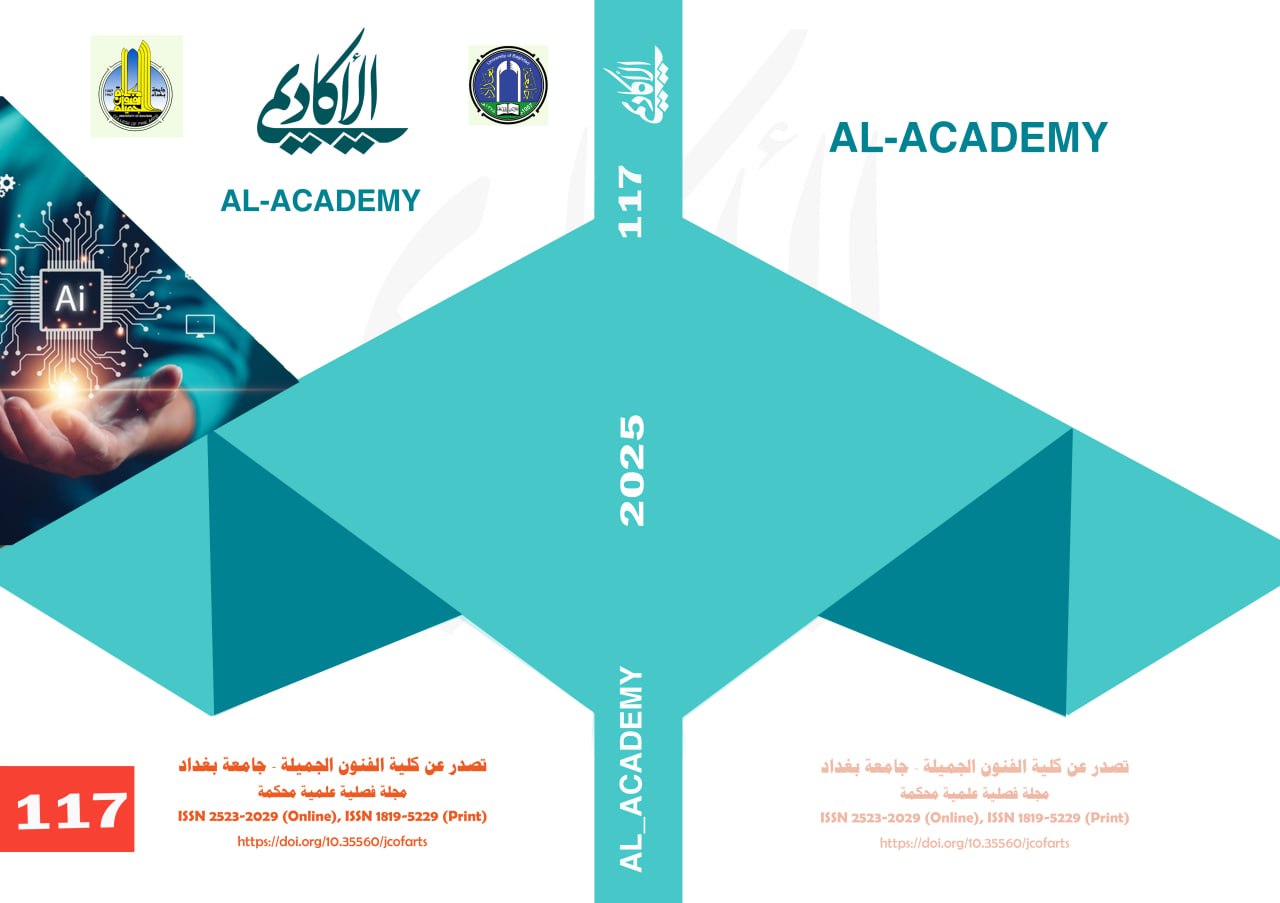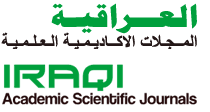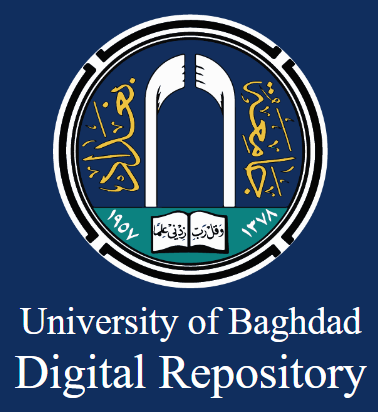The technical diversity of postmodern arts and their representation In students' products
DOI:
https://doi.org/10.35560/jcofarts1327Keywords:
technical diversity, post-modern arts, student productsAbstract
Artistic trends, from their first beginnings up to post-modernism, are considered a turning point towards change, diversity and innovation in the field of artistic production. This is what helped the artist to create different works of art, depending on the different mechanisms and new techniques of display that are different from what was previously seen and outside the norm and the approved values. In the past, they were adopted as expressive and aesthetic values that formed and diversified until they became contemporary styles and trends later, especially those arts that witnessed the post-modern period. These arts are considered an important and advanced step that worked to transform the artistic achievement in its general composition, into a stylistic structure based on synthesis. An aesthetic technique for a collection of objects taken from nature and manufactured by humans, who worked to transfer them into the artistic experience. Therefore, the researcher decided to delve into the content of the current study and answer the following question: (Was this radical transformation reflected in the performance of technical diversity in the students’ productions)? The current research consisted of four chapters. The first chapter included presenting the research problem, which centered on answering the following question. (Was this radical transformation reflected in the performance of technical diversity in students’ productions?) As the current research aims to (identify technical diversity in Abstract Expressionism and the extent of its uses in students’ productions). The second chapter, which includes the theoretical framework and consists of two sections, the first section: the concept of technology, and the second section: technical diversity in Abstract Expressionism, and the second chapter ended with indicators of the theoretical framework, while the third chapter includes the research methodology and procedures, as the current research aims to identify the diversity Technical approach to Abstract Expressionism. The researcher adopted the descriptive analytical approach as a methodological framework for building his research procedures, as it is the most appropriate scientific method to achieve the goal of the research, as the current research community consists of several artistic paintings, numbering (10) artistic paintings, where the sample of the current research was chosen, numbering in number. (3) Artistic paintings, which were chosen intentionally. The research produced a set of results, including: 1- Through the analysis of the samples of the current research, it became clear that all samples relied on technical diversity in forming the structure of the artwork, such as knives, trowels, and types of brushes, Blades, perforated cans for spraying colors, and pieces of sponge were used for wiping and creating a kind of color fusion as a new technique within the artwork. 2- All artists have used unfamiliar or accustomed materials in their artistic works, to create technical diversity in the space of the artistic work, such as wood, shattered glass, metals, heavy paint, distilled paint, sand, and other materials. The fourth chapter includes conclusions, including . 1-The use of technical diversity contributed significantly to addressing the artistic painting space, which led to innovation and distinction. 2- Abstract Expressionism was able to activate marginalized materials and benefit from technical developments in achieving artistic production.
References
- Abu Ayyash, Salah al-Din: Dictionary of Arts Terms, vol. 2, 1st edition, Dar Osama for Publishing and Distribution, Amman 2015.
- Afif, Bahnasi: From Modernism to Postmodernism in Art, Dar Al-Kitab Al-Arabi, Damascus, 1997.
- Al-Hatemi, Alaa Ali Abboud: Technology of Expression in the Formation of Postmodernism, 1st edition, Dar Radwan for Publishing and Distribution, Amman, 2013.
- Al-Hattab, Qasim: The aesthetics of plastic art in the era of the European Renaissance and the schools of modern and contemporary art, 3rd edition, Baghdad, 2010.
- Ali Al-Meligy: Technology in the Fine Arts, Horus Printing and Publishing, Egypt, 2002.
- Al-Kalloub, Bashir Abdel-Rahim: Technology in the teaching and learning process, Dar Al-Sharq, Amman, 2nd edition, ed.
- Al-Ruwaili, Megan, and Saad Al-Bazei: The Literary Critic’s Guide, Arab Cultural Center, Beirut, 2002.
- Al-Wadi, Ali Shinawa and Amer Abdel-Rida Al-Husseini: Environmental Expression in Postmodern Art, 1st edition, Dar Safaa for Publishing and Distribution, Amman, 2011.
- Amhaz Mahmoud: Contemporary Artistic Currents, 1st edition, Publications Company for Distribution and Publishing, Beirut, 1996.
- Amhaz Mahmoud: Contemporary Fine Art, Photography, ed., Dar Al-Muthalath for Design, Printing and Publishing, Lebanon, 1981.
- Edward, Lewis Smith: Artistic movements after World War II, published by: Fakhri Khalil, House of General Cultural Affairs, Baghdad, 1995.
- FarajAbbo: Science of the Elements of Art, Part 2, College of Fine Arts, University of Baghdad, Delfin Publishing House, Italy, 1982.
- Frakes, Victor: The Technical Man, Emile Khalil Pius, Beirut, New Horizons House, ed.
- Ibrahim Ahmed: The problem of existence and technology according to Martin Heidegger, Arab House of Science Publishers, Beirut, 2006.
- Ismail, Ezz El-Din: Art and Man, 11th edition, Dar Al-Ilm, Beirut, 1974.
- Muhammad Sabila: Modernity and Postmodernism, Center for Studies in the Philosophy of Religion, Baghdad, 2005.
- Muller, Emile Joseph: Art in the Twentieth Century, published by: Maha Farah Al-Khoury, Talas Publishing House, Damascus, 1988.
- Nobler, Nathan: The Dialogue of Vision - An Introduction to Art Appreciation and the Aesthetic Experience, Translated by: Fakhri Khalil, Reviewed by: Jabra Ibrahim Jabra, Dar Al-Ma’moun for Translation and Publishing, 1st edition, Baghdad, 1987.
- Thomas Munro: Development in the Arts, vol. 3, ed., Muhammad Ali, Abu Durra and others, Egyptian General Book Authority, Cairo 1972.
- Exford ,N, Exfrord, New, twentieth century, Diction, of the EngIishIanguae, Newyork, simon, and Schuster, 1983, p.165.
- Genson, H, w, History ofart ,voI. II. Newyork, pientice, HiIIince, and, Harry,N, Abroms,Ine, puIishers,1991.p:85.
- Haskell, Barbara. Donald Judd. Whitney Museum of American Art, and Dallas Museum of Art. 1989. p:21.
- J. HeIIier : Christo cIawdia , London : taschenpubIish Ltd , 1999 , p:1-274.
- Smith, Robert, conceptuaI Art, in (concepts of modern art) Thame and Hudson Ltd, London,London, 1981, p:256.
- WiIson, Laurie, LouIse Nevelson (iconography and sources). Essay, Garland pub, New york. 1981.
- WoIker , John , Art Science pop , thomes and hudso , Itd , London . 1975 , p:55 .
- Al-Kanani, Muhammad Jaloub, AnasKazem, The Technical Transformation in Pop Art (A Study in Display Techniques), Al-Academy Magazine, Issue 89, 2018.
- Khudair, IkhlasYas, The Symbolic Dimension in the Metaphysical School, Al-Academy Magazine, No. 64, 2018.
- Loos, Salam Ador, Red Badge Symbols in European Oil Paintings, Al-Academy Magazine, No. 64, 2018.
- Muhammad Abdul LatifMutlib: Between Science and Art, Al-Aqlam Magazine, Baghdad, No. 7, July 1, 1989.
- Muhammad, EnasTalib, Transformations of form for post-modern arts in the projects of students of the Department of Art Education, Al-Academy Magazine, No. 89, 2018.
Downloads
Published
Issue
Section
License
Copyright (c) 2025 Adhra eabd alrahim aslam akram, Muhammed Abdullah Ghaidan

This work is licensed under a Creative Commons Attribution 4.0 International License.













